| Bartholdi, the sculptor of the Statue of Liberty, created this fountain for the 1876 Philadelphia Centennial Exhibition. When the Exhibition closed, the United States government purchased the fountain at the suggestion of Frederick Law Olmsted, the landscape architect who designed the grounds of the Capitol. |
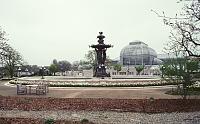
|
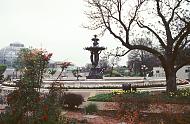
|
The fountain was moved to Washington D.C. in 1877 and placed at the southwest corner of Capitol Hill near the Botanic Garden.
|
| |
|
The Bartholdi ParkThe beautiful park where the fountain stands was named in honor of Frédéric Auguste Bartholdi in 1985. |

|
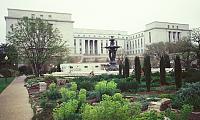
|
| |
|
| The fountain has three sections: a base with amphibious creatures and stylized shells, a central section with three curvaceous sea nymphs, and a large basin at the top with twelve lights (originally gas) and three tritons supporting a kind of crown. |
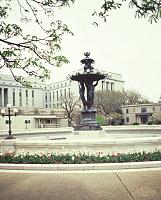
|

|
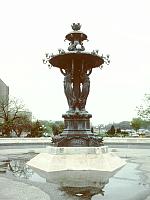
|
| |
|
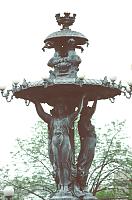
|

|
The central section of the fountain depicts three identical nereids (sea nymphs) with fish and sea life between their feet. Like carytids, these eleven feet high women seem to support the upper basin (in reality supported by a column at the center). The beautifully detailed nymphs have form-revealing drapery, cinched at the waist by scallop shells.
|
| |
|
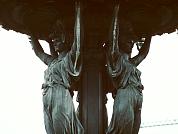
|
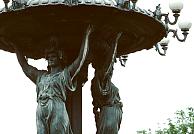
|

|
| |
|
The fountain was one of the first monuments in Washington to be lighted at night. The lights around the basin were added in 1886, and electric lighting replaced the gas fixtures in 1915.Left: the base; center: the feet of the Nereids; right: light fixture |
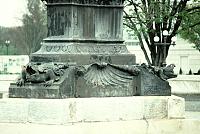
|
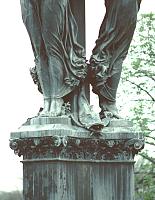
|

|

















 Click here to return to index of art historical sites.
Click here to return to index of art historical sites.
 Click here to return to index of artists and architects.
Click here to return to index of artists and architects.
 Click here to return to chronological index.
Click here to return to chronological index.
 Click here to see the home page of Bluffton College.
Click here to see the home page of Bluffton College.
